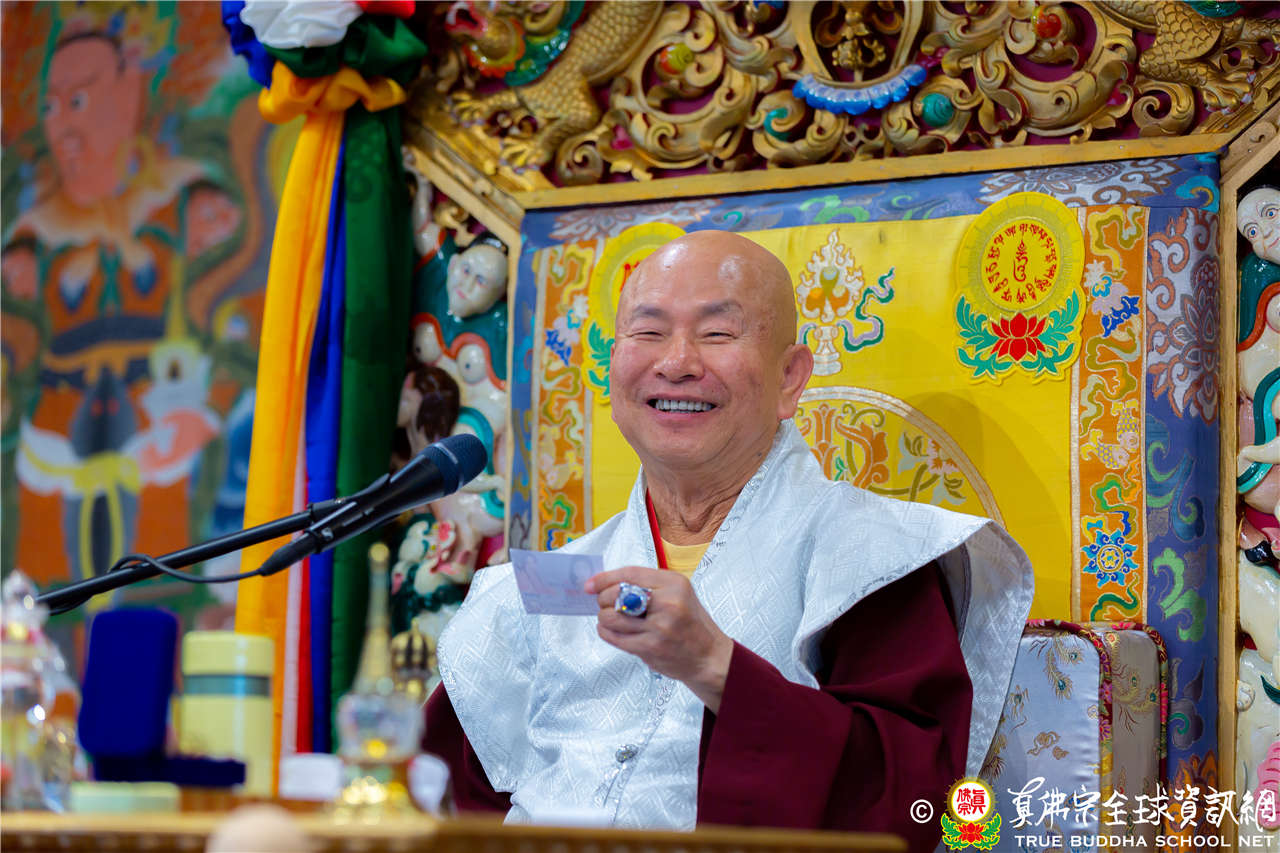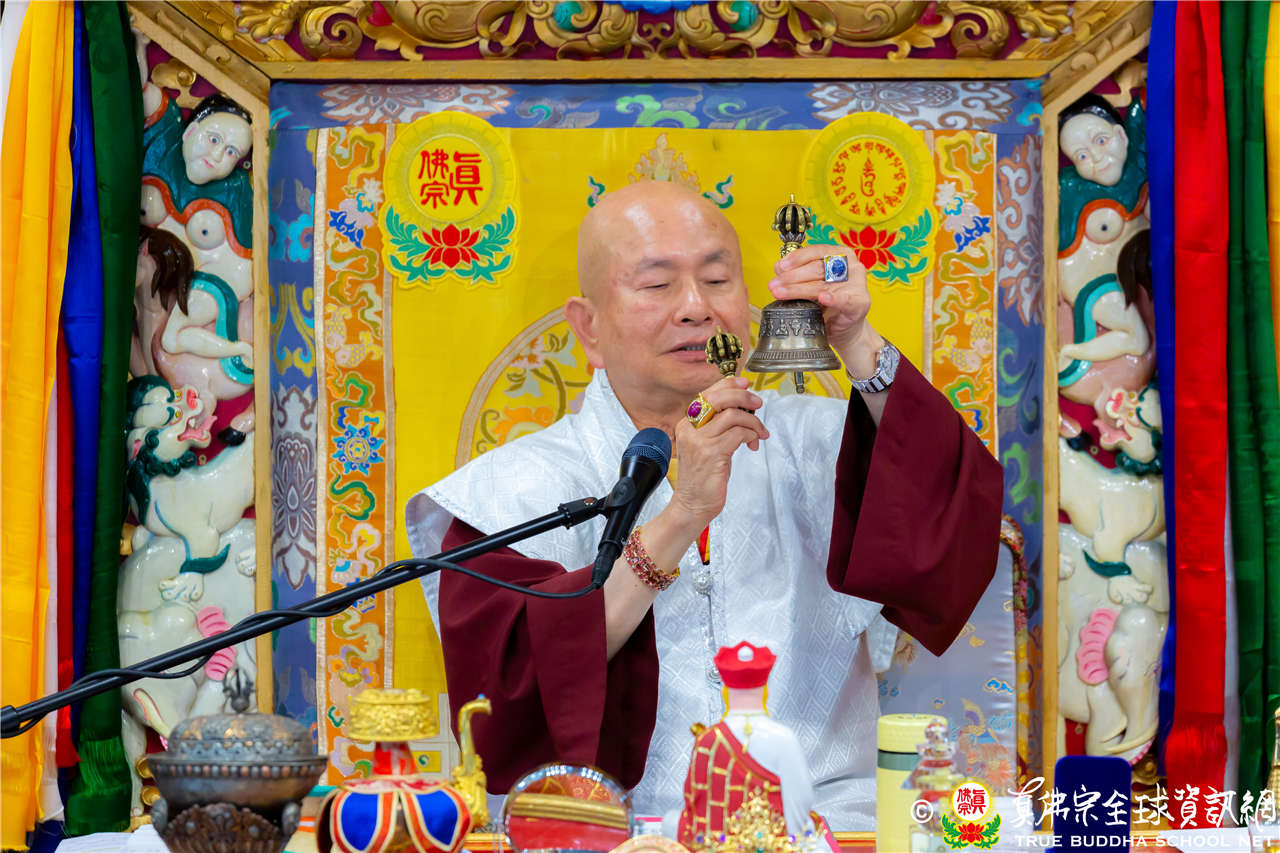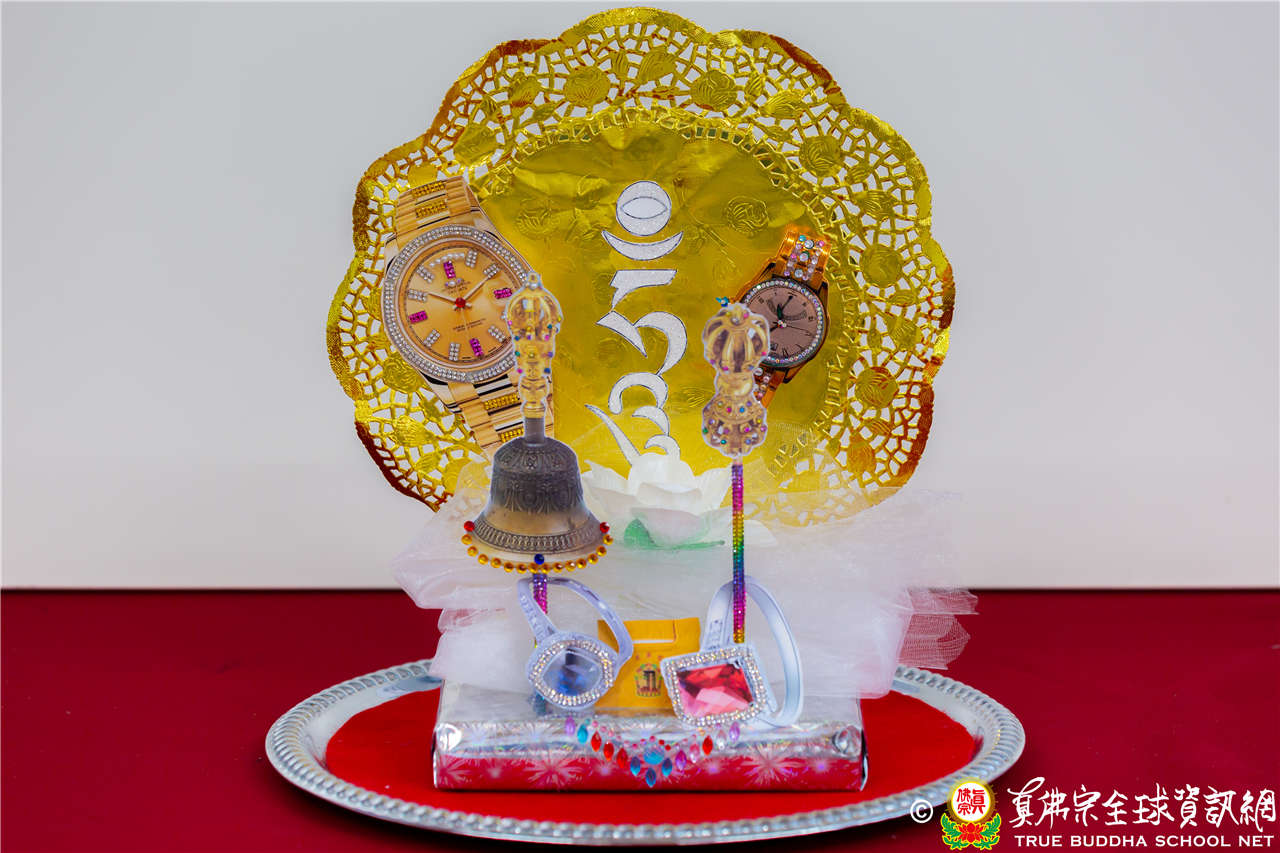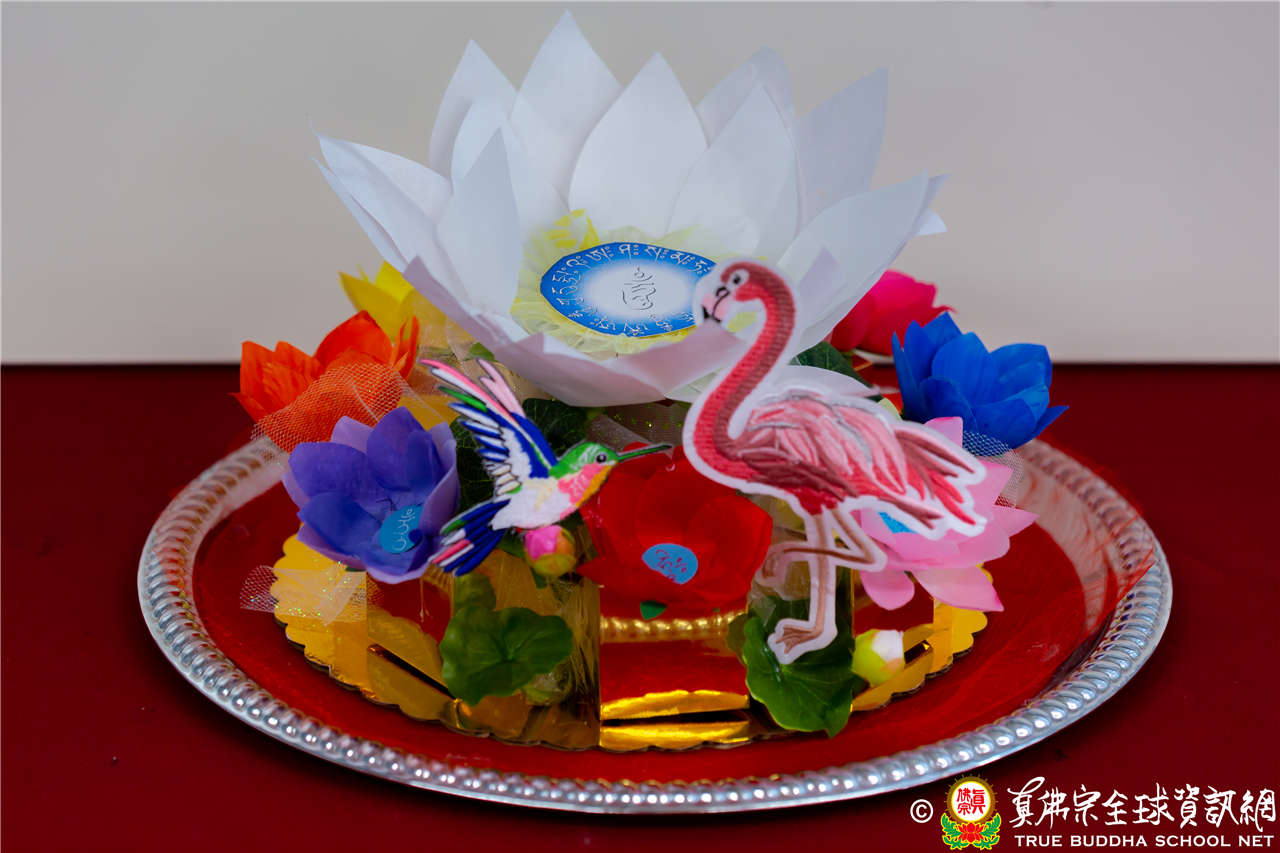
A Detailed Exposition of the Vimalakirti Sutra
by Grandmaster Lu, Living Buddha Lian Sheng of the True Buddha School
Translated into English by the True Buddha School Vimalakirti Translation Team
Discourse 37, 25 September 2022 - Chapter One—Buddhaverse (Continued)
Chapter One—Buddhaverse
Their names are:
Equal View Bodhisattva,
Unequal View Bodhisattva,
Equal and Unequal View Bodhisattva,
We will continue on the Vimalakirti Sutra. Many bodhisattvas attended Vimalakirti’s dharma assembly. There were thirty-two thousand bodhisattvas, right? It is impossible to introduce them all as it will take over a year for me to do so.
The sutra lists only fifty-two bodhisattvas. Grandmaster has previously explained the first three bodhisattvas: the Bodhisattva with the View of Equality (Equal View Bodhisattva), the Bodhisattva with the View of Inequality (Unequal View Bodhisattva), as well as the Bodhisattva with the View of Both Equality and Inequality (Equal and Unequal View Bodhisattva).
When I first read the names of these three bodhisattvas, I found them very interesting. They are Equal View, Unequal View, and Equal and Unequal View Bodhisattvas. I realized these names convey very profound meanings, which I had explained before.
I had explained the meaning of Equal View Bodhisattva. This bodhisattva views all sentient beings equally because he has the wisdom of true emptiness. Why are all beings equal? Because the buddhanature they embody is all equal.
Sakyamuni Buddha said that all sentient beings have buddhanature. As a human, we have an illusory body; we are born in this world because of our illusions. Life in this world is illusory—it is not real! So are all sentient beings, they are not real! Once you comprehend this, you know that there is no difference among beings—they are all equal! The Equal View Bodhisattva comprehends this wisdom of true emptiness.
Next, how about the Bodhisattva with the View of Inequality? The Unequal View Bodhisattva has gained the wisdom of discernment. This bodhisattva discerns the differences among sentient beings, as there are all kinds of beings in this world. There are sages, and there are fools, who are dumb and stupid. Some are impatient, and some are slow, always procrastinating.
One time, we were hiking up the Rainbow Hill next to the Rainbow Villa. When we were halfway up, my mother was still at the foot of the hill. We waited for her to reach us, and it took nearly half an hour. “Mom, why are you so slow?” I asked. She glanced at me and responded, “You’ll know when you are old!” Now, at this age, I know what she meant.
It takes me half an hour to care for my teeth, another half an hour to bathe, at least half an hour to shave my head, and another half an hour to go to the restroom. That’s two hours! What a waste! I have less and less time to write now. How did I become so slow? Can I be faster? No, I cannot! You will know when you are old! Everything you do will slow down. You cannot run or exercise intensely, otherwise, you might get injured.
This is the wisdom of discernment. Indeed, there are differences among people—children and adults, middle-aged and old-aged. The wisdom of discernment perceives the differences. Certain illnesses occur at old age, like osteoporosis. What you could do when you were young, you cannot do now.
When I was young, I could perform many gymnastic moves—big cartwheels, small cartwheels, horizontal bar, parallel bars, I could easily do them all. It’s like what you see in the Olympics. Now, I don’t even dare to try. Hanging on the horizontal bar would make me look like a fat pig hanging. I still did it when I was seventy, but Shimu urged me to never do the bars again. She said, “When you get down from the bars—crack—the body is on the ground while the hands are still up there.”
Other differences include mental and psychological differences. There are those with depression, bipolar disorder, or other mental issues, some of which are very twisted. People are all different. This is called the wisdom of discernment. The Unequal View Bodhisattva has the wisdom of discernment to differentiate sentient beings.
How about the Bodhisattva with the View of Both Equality and Inequality? As I previously mentioned, this bodhisattva uses both types of wisdoms in life. If you do so, then you are a bodhisattva with the view of equality and inequality.
I asked Vimalakirti on how best to explain, to which he gave me several analogies. The first analogy is the vajra scepter and vajra bell, which are both made of bronze. They are equally bronze, and this is the equal view.
What is the unequal view? They are unequal in their shapes; one is in the form of a scepter, while the other is a bell. The vajra scepter is very strong, whereas the vajra bell can produce a sound. In this sense, they are different. And this is the unequal view.
Although they are both made of bronze, they look different. Now, I use the vajra scepter to hit the vajra bell, and it produces a sound. When the two are put together, this is the equal and unequal view.

I then asked Vimalakirti for another analogy, one that features people. Interestingly, he knows politics, too. He said, “Listen! It is about politics.” Western countries, such as the United States, Canada, Europe, call themselves “free countries” or the Free World. And we refer to Russia, China, North Korea, as “controlled countries.” Let’s just say that the West is called the “Free World,” while those countries in the East are called the “Controlled World.”
This was all spoken by Vimalakirti, not me! The free world in the West promotes liberal democracy, while those countries in the East are undemocratic and some are even totalitarian. Liberal democracy is the Equal View. It allows its people to act freely. However, freedom cannot simply be expressed in that way. For instance, in the US, people are free whether or not to wear a mask during the pandemic, right? If you ask someone who doesn’t wear one, they might respond that it is their “freedom” because this is America. No one can control them. They promote freedom, but it has limitations too.
Let me share a story about freedom. One time, when everyone was big into freedom, a man got on a train and put his big bag on the seat next to him. The train was full, and all the other seats were taken. Someone saw the seat with a bag on it and asked, “Why did you put your bag on the seat?” “It’s my freedom! I have the freedom to put my bag anywhere.” The other man, without saying anything, took the bag and threw it out the window. The bag owner was aghast, “Why did you throw my bag out the window?” “It is my freedom!”
Therefore, we cannot use freedom to do whatever we like. The freedom is freedom under the constraint of law. You are only free within the scope of law. Do you understand? Freedom and democracy are analogies for the view of equality. It is related to the Equal View Bodhisattva.
As for the Unequal View Bodhisattva, it is related to the wisdom of discernment. For example, in an autocratic country, when the government needs to buy your land, you will sell it even if you don’t want to sell it at such a time or price. An autocratic government can urge people to follow certain rules easier, such as wearing masks during the pandemic or exercising in the morning. Whereas under a liberal democracy, it is much more difficult to get its people to agree on things, like housing or building a high-speed rail for example.
Vimalakirti says that it is not a matter of which one is better than the other; they are just different. Both have their strengths and weaknesses. When America tries to build cross-country high-speed railways, it is very difficult to fulfill—and probably never will. In Mainland China, they built many high-speed railways in a very short time—just a few short months to build a difficult bridge, even bridges over or under the sea. In America, it’d probably take decades! I heard that a high-speed rail project was to take 30 years…That’s why we rarely have new highways; even the bridges are getting very old. Look, how fast China is developing! Under the autocratic system, everything can be done very quickly.
In a liberal democracy, the government allows more freedom to its people; their laws are not as strict. Under an autocratic system, the government controls and manages the people more. It is a matter of how they define their laws and how they manage their people.
Fraud organizations originated in Taiwan, and the worst ones are still Taiwanese. It is one of the most infamous things about Taiwan. When fraudsters were arrested and sent back for prosecution in Taiwan, they got away very easily, because Taiwanese laws regarding fraud are very lenient. Had they been prosecuted in Mainland China, their punishment would have been very severe. There are some differences between the two sides.
Thus, Vimalakirti talks about both equality and inequality.
Think about it! Equal and unequal views should be combined just right. While the equal view is likened to a liberal system, the unequal view is a controlled system. They are different approaches. When the right balance is found, this perfect harmony is likened to the Equal and Unequal View Bodhisattva.
On the other hand, a full totalitarian is too strict and too much liberalism is too loose. When it is just right, that is the Equal and Unequal View Bodhisattva. This is what Vimalakirti said, not I. Now, do you understand these analogies?
Vimalakirti gave me another example using a tree. Yesterday, Master Changren said that the two huge statues of Skanda Bodhisattva and Sangharama Bodhisattva at the Homa Hall were carved out of one tree. This story is somewhat related: One cuts a tree into two sections, using the top part to carve a statue of Sakyamuni Buddha, and the bottom to make a toilet seat cover. In front of the Buddha’s statue, people joined their palms, bowed, and worshipped, whereas people sat on top of the toilet seat and pooped. Yet, they were carved out of the same tree. Being made of the same tree is analogous to the Equal View Bodhisattva. The Unequal View Bodhisattva differentiates between the Buddha statue and the toilet seat.
Now, let’s think about their functions. The toilet seat cover made you feel more comfortable when sitting in cold winters. When you pray to the Buddha’s statue, you feel good and at peace. Being made from the same tree is analogous to the equal view. Being made into a toilet seat and a Buddha statue is analogous to the unequal view. Altogether, with their functions and benefits is the view of both equality and inequality.
Vimalakirti gave these three examples and told me to explain them to everyone. Everyone should now understand the view of equality, the view of inequality, and the combined views of equality and inequality. They are represented by these three bodhisattvas. Do you understand it clearly?
You cannot say that a free democratic country is all good. Is it? Because everyone is free to carry and use guns, there are many shootings. In a controlled country, where guns are not so free to use, there are a lot fewer random shootings. In this sense, freedom brings disasters. One can just take a gun and shoot whenever they are in a bad mood. “Why did you kill?” “My dog told me to do so.” What?! Because of a dog?! How horrible! Guns and shootings are rampant in America.
When Grandmaster goes to fill gas for my Rolls Royce, there are other drivers in the gas station. Sometimes they watch me and some would even approach me, making me feel very uncomfortable. What should I do? So I’d hold on to my bag tightly. I have valuables in there. [joking]
There is too much freedom in America. Here, people use guns freely, whereas say, in China, they can fight with their fists instead of guns. Freedom can be problematic. The rules are loose in America whereas in China, it is much stricter.
In sum, if the two systems are balanced, then it will be a perfect harmony—not too loose and not too strict. Finding the right balance between the liberal democratic system such as the United States and the autocratic system of China and the East are likened to the Equal and Unequal View Bodhisattva.
Om mani padme hum.


Next discourse on the Vimalakirti Sutra: Discourse 38, 1 October 2022 - Chapter One—Buddhaverse (Continued)
Previous discourse on the Vimalakirti Sutra: Discourse 36, 24 September 2022 - Chapter One—Buddhaverse (Continued)
Index of links to all discourse on the Vimalakirti Sutra: https://en.tbsn.org/guidem/detail/2975/
Back to the main index page of all dharma discourse: https://en.tbsn.org/guidem/index
Full webcast of 2022.09.25 Padmakumara Homa Ceremony (Rainbow Temple, North Bend, USA) and dharma discourse with English interpretation: https://youtu.be/a7SQfJEfseU




